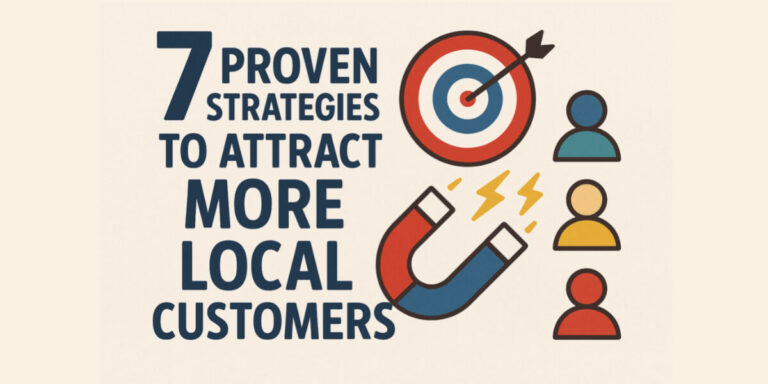
You’ll build a successful client acquisition funnel by mastering five crucial components that work together seamlessly. Start with targeted lead magnets that solve specific problems your ideal prospects face, then create clean landing pages with compelling headlines and simple forms. Develop email sequences that consistently deliver value while building trust through case studies and insights. Master sales conversations by focusing on rapport-building and diagnosing needs rather than pitching. Finally, implement systematic follow-up processes that combine automation with personal touches. The strategies below reveal exactly how to execute each component effectively.
Lead Magnets That Attract Your Ideal Prospects

How do you transform casual website visitors into engaged prospects who actually want to hear from you? The answer lies in strategic lead magnets that deliver immediate value while positioning you as an expert.
Your lead magnet must solve a specific problem your target audience faces daily. Think practical guides, templates, checklists, or mini-courses that address their pain points directly.
Content upgrades work exceptionally well because they complement your existing blog posts, offering deeper insights on topics readers already find interesting.
The key is specificity. Instead of “Marketing Tips,” create “The 5-Step Email Sequence That Converts Cold Leads Into Paying Clients.” This precision attracts qualified prospects while filtering out those who aren’t serious about their challenges. Additionally, applying SEO best practices to your lead magnets can significantly improve visibility and attract more relevant traffic to your offers.
Landing Pages That Convert Visitors Into Leads
Creating compelling lead magnets means nothing if your landing page can’t seal the deal. Your landing page design directly impacts whether visitors become leads or bounce away frustrated.
Focus on clean, distraction-free layouts that guide eyes toward your call-to-action button. Use headlines that immediately communicate value, addressing your prospect’s specific pain points.
A cluttered landing page kills conversions before they start—simplicity and clear value propositions are your conversion weapons.
Visitor engagement increases when you match your landing page messaging to the traffic source that brought them there. If they clicked a Facebook ad about productivity tips, don’t suddenly pivot to discussing marketing strategies.
Keep forms short—ask only for crucial information like name and email. Include social proof through testimonials or client logos to build trust.
Additionally, leveraging high conversion rates within your landing page design can significantly enhance the effectiveness of your client acquisition efforts.
Test different button colors, headlines, and form placements to optimize conversion rates continuously.
Email Sequences That Build Trust and Authority

Once visitors convert into leads through your optimized landing pages, you’ll need a strategic email sequence that transforms skeptical prospects into enthusiastic clients. Your email sequence should deliver consistent value while positioning you as the obvious choice for their needs.
Implement trust building techniques by sharing client success stories, case studies, and behind-the-scenes insights about your process. Don’t just tell prospects what you do—show them how you’ve solved similar problems for others. Include specific results and testimonials that address common objections.
Focus on authority boosting content by sharing industry insights, predictions, and your unique perspective on market trends. Teach valuable concepts they can implement immediately, demonstrating your expertise without giving away everything.
This approach builds credibility while keeping prospects engaged throughout your nurture sequence.
Sales Conversations That Close Qualified Prospects
When prospects reach the sales conversation stage, they’ve already demonstrated interest and qualified themselves through your funnel—but the real challenge lies in converting that interest into commitment.
Your success depends on mastering two critical skills: rapport building and objection handling.
Start by establishing genuine connection through active listening and asking thoughtful questions about their specific challenges. You’re not pitching—you’re diagnosing their needs and positioning your solution as the natural remedy.
When objections arise, don’t combat them. Instead, acknowledge their concerns and guide them toward understanding how your service addresses those exact issues.
The most effective objection handling happens when you’ve built enough rapport that prospects trust your expertise and feel confident in your ability to deliver results.
Follow-Up Systems That Maximize Every Opportunity

Most prospects won’t say yes during your first sales conversation, but that doesn’t mean the opportunity is lost—it simply means your follow-up system determines whether you’ll convert them later or watch them slip away to competitors.
Your follow-up strategy should combine personal touches with systematic automation. Set automated reminders to reconnect with prospects at strategic intervals—typically within 24 hours, then weekly for the first month. Each touchpoint should provide value, whether through industry insights, case studies, or solutions to problems they mentioned.
Effective client engagement requires tracking interaction patterns and adjusting your approach accordingly. Some prospects need more education, others require social proof, and many simply need time.
Your system should categorize leads based on their readiness level and deliver appropriate messaging that keeps you top-of-mind when they’re ready to move forward.
Frequently Asked Questions
How Long Does It Typically Take to See Results From a Client Acquisition Funnel?
You’ll typically see initial funnel effectiveness timeline results within 30-60 days, though meaningful conversion rate expectations require 3-6 months. Your results depend on traffic volume, offer quality, and how well you’ve optimized each funnel stage.
What Budget Should I Allocate for Building and Running My Acquisition Funnel?
A marketing agency allocated $5,000 monthly—60% ads, 40% tools/content—and tripled their leads. Your budget allocation should dedicate 50-70% to advertising, 30-50% to funnel expenses like software, content creation, and testing for ideal results.
How Do I Measure the ROI of My Client Acquisition Funnel Investments?
Track ROI metrics by monitoring conversion rates through funnel analytics and investment tracking. Calculate customer lifetime value against profit margins for performance evaluation. Measure revenue growth from your funnel investments to determine true profitability and optimize spending.
What Are the Most Common Mistakes That Cause Acquisition Funnels to Fail?
Don’t put all your eggs in one basket—you’re likely neglecting funnel optimization or missing the mark with audience targeting. You’re also probably not testing enough variations or failing to nurture leads properly through each stage.
How Often Should I Update or Refresh My Funnel Components?
You should implement funnel optimization strategies quarterly, but component testing frequency varies. Test high-impact elements like headlines and CTAs monthly, while reviewing overall funnel performance weekly to catch declining conversion rates early.
Final Thoughts
You’ve now got the blueprint for a complete client acquisition funnel that transforms strangers into paying customers. Here’s what should motivate you: businesses with structured lead nurturing generate 50% more sales-ready leads at 33% lower cost. That’s not merely impressive—it’s game-changing for your bottom line. Don’t let another prospect slip through the cracks because you’re missing these vital components. Start building your funnel today, and watch your conversion rates soar.
- Writing Content That Converts Visitors Into Customers - 04/11/2025
- How to Plan a Content Calendar That Works - 29/10/2025
- SEO Content vs. Social Media Content: What’s the Difference? - 23/10/2025




